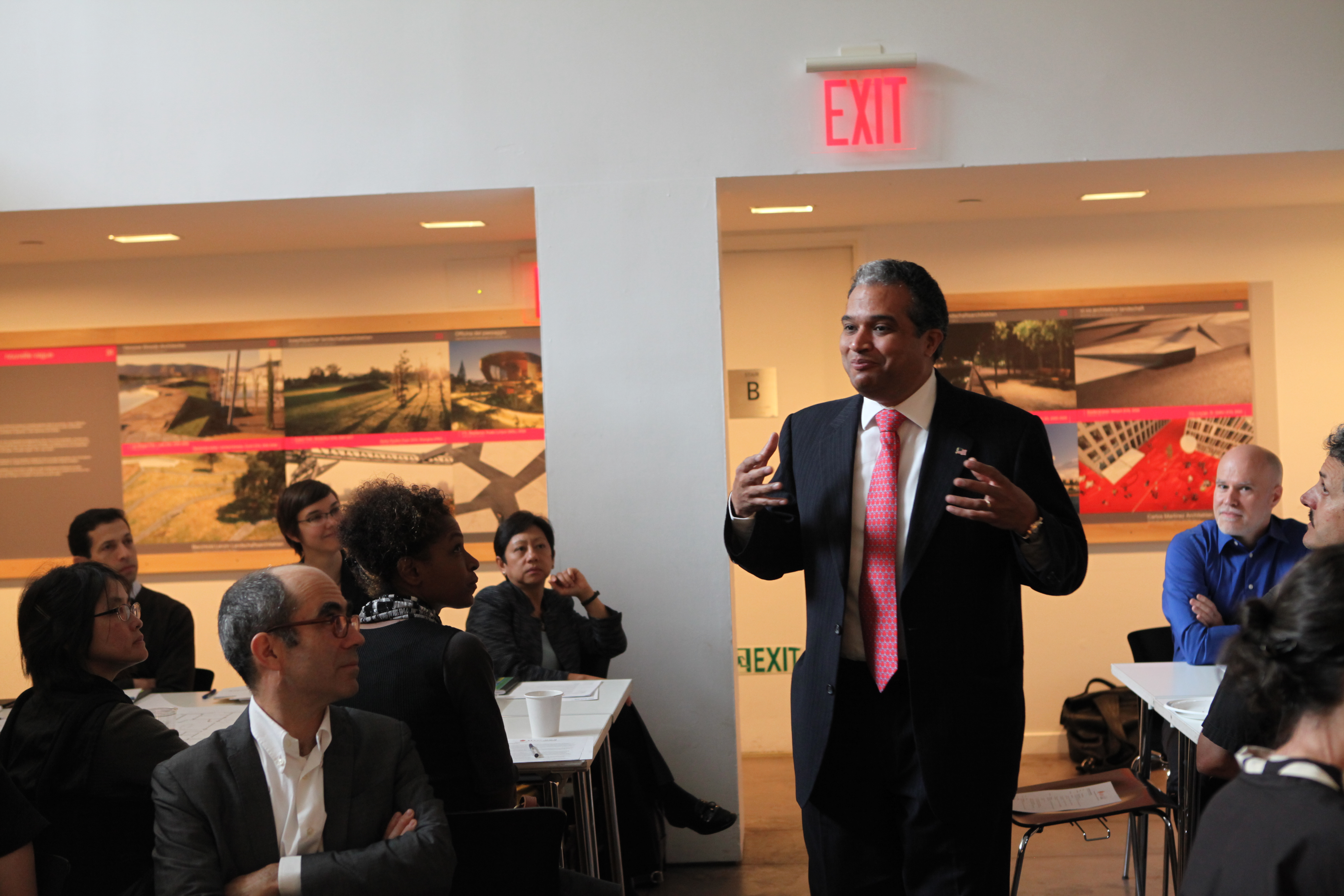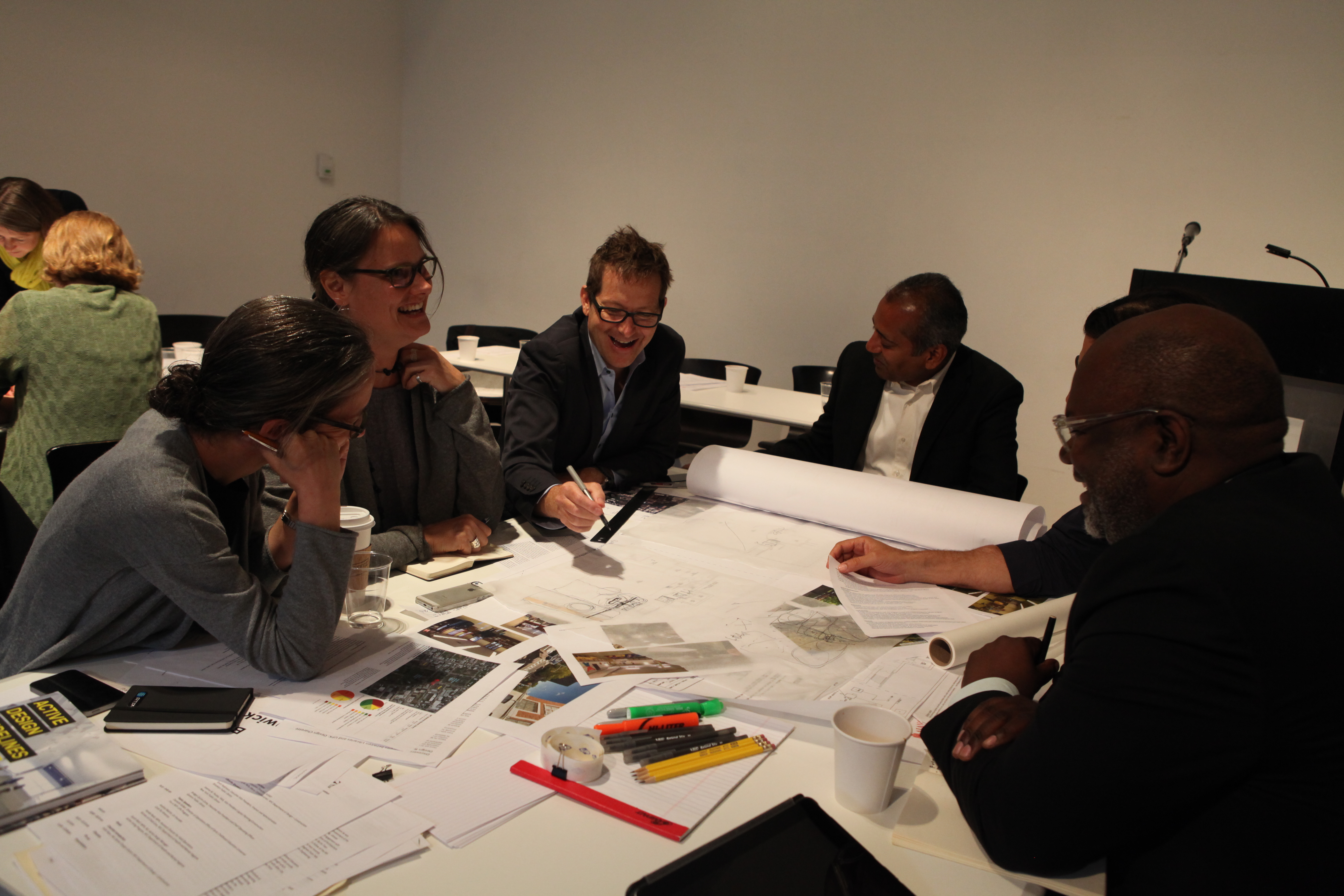by: EmmaPattiz
Mayor Bill de Blasio recently announced his initiative to provide free, universal pre-kindergarten (UPK) for all eligible children in NYC. To make enough seats available, the city must engage more community-based organizations. Branch libraries have been identified as ideal locations for UPK because of the existing programmatic synergies. On 06.12.14, AIANY hosted “Uncovering Synergies: A Design Charrette,” organized by AIANY and the NYC Department of Design + Construction (DDC), and sponsored by the AIANY Committee on Architecture for Education. The charrette explored how seven library branches in five boroughs can accommodate UPK by fulfilling the city’s varied requirements. This interdisciplinary exercise brought together representatives from the Brooklyn Public Library, New York Public Library, and Queens Public Library, relevant city agencies, non-profit organizations, and architects.
The library reresentatives expressed their enthusiasm about accommodating UPK, and outlined the significant challenges that they face. Presenters from the NYC Department of Education Division of Early Childhood Education, the NYC Department of Health and Mental Hygiene (DOHMH), and Cook for America® outlined what is needed to create quality, permissible UPK environments.
Once participants were thoroughly overwhelmed by the important information on UPK, the workshop got underway. Seven groups were each assigned a different branch library. Architects tackled issues related to adequate indoor and outdoor space, transportation, storage, food, Active Design, and more. In doing so, participants touched on other mayoral priorities, such as affordable housing development and Vision Zero safety goals.
For DDC and AIANY, the charrette started an essential conversation. Architects and city officials began thinking about the possibilities. Download helpful documents and resources here, and please join us for a follow-up public program in October.
Pulse Points
- Last week in Albany:
- Due Process for Design Professionals (S.5525 Lanza/A.8491 Cusick) passed in the Senate. In the Assembly Committee on Codes.
- The Good Samaritan Act (S.3942-A Hannon/A.4380-B Englebright) passed in the Senate. In the Assembly Committee on Codes.
- QBS for Public Authorities (S.6639-A DeFrancisco/A.7268-A Benedetto) passed in the Senate. In the Assembly Committee on Ways and Means.
- Historic Preservation Tax Credit Increase (S.4642-A Grisanti/A.6979-A Englebright) passed in the Senate. In the Assembly Committee on Ways and Means.
- Rehabilitation Tax Credit for Residential Properties (S.2739-B Ranzenhofer/A.4163-B Schimminger) passed in the Senate. In the Assembly Committee on Ways and Means.
- The New York State Energy Research and Development Authority (NYSERDA) will distribute $34 million to those designing and constructing zero-net-energy homes. These buildings might rely on solar panels or geothermal heating and cooling systems. Incentive packages range between $2,000 and $8,000, and both professional builders and individuals are eligible. Read the press release here.
- On 06.05.14, the NYC Department of Small Business Services (SBS) held “Compete to Win: Delivering Architectural Services – Design Through Construction” at the Center for Architecture. The design and construction process with city agencies differs from working with private clients. Architects presented the ins and outs of acquiring contracts with city agencies, based on their own practices. More information is available online at nyc.gov
- The National Council of Architectural Registration Boards (NCARB) Licensure Task Force has been investigating alternative approaches to licensure that would enable architects to become licensed upon graduation from particular programs. The Task Force researched concepts that integrate internship and examination requirements to streamline and simplify the process. The unconventional format still upholds the standards to protect the public’s health, safety, and welfare, but attempts to eliminate overlaps and redundancies in existing programs. Traditional curricula would not disappear, but a newfound flexibility could expand and promote the profession. NCARB must still identify schools that are interested in participating, and jurisdictions to accept their proposals. Read the press release here.
Emma Pattiz is Policy Coordinator at AIANY.










